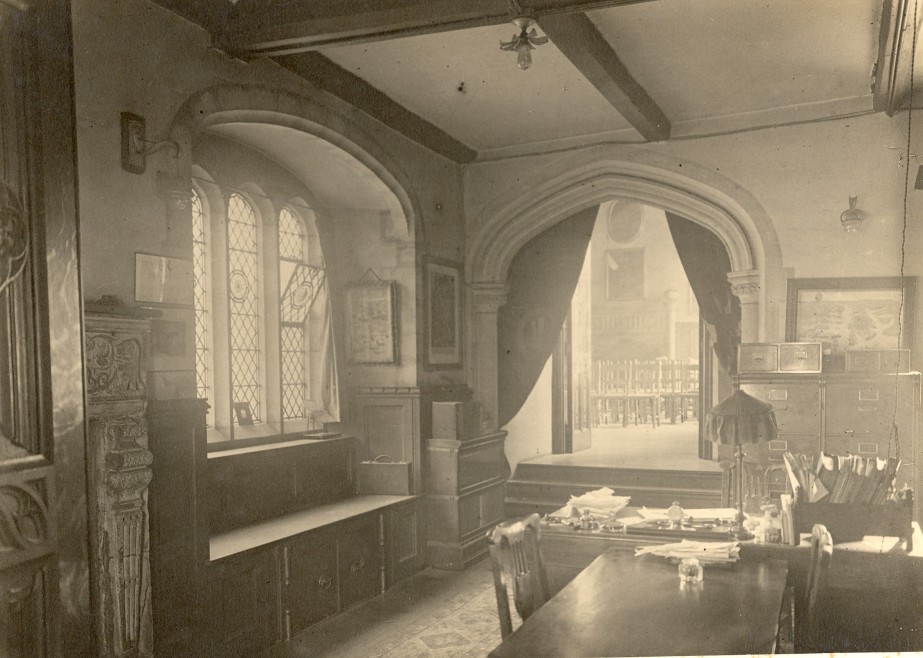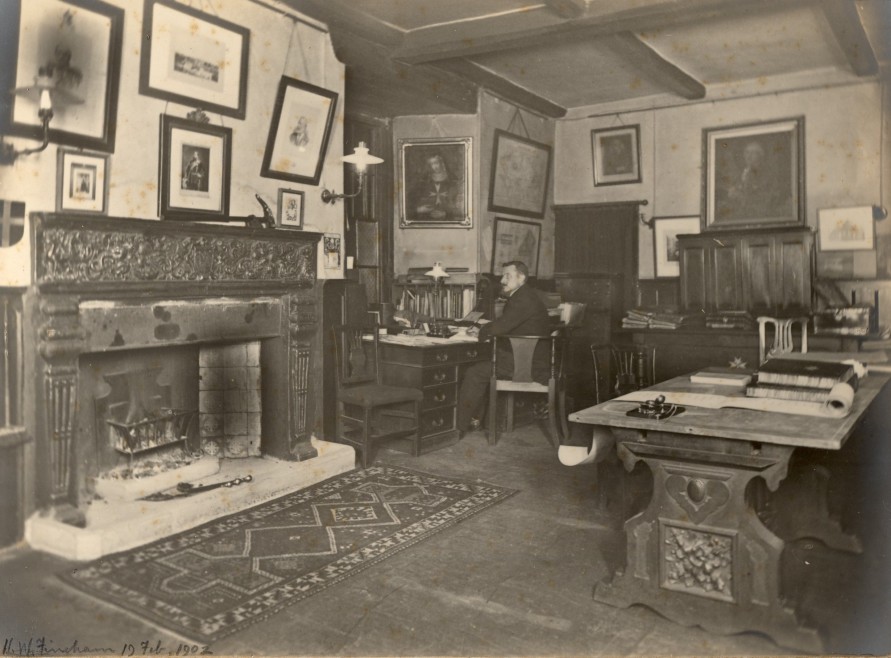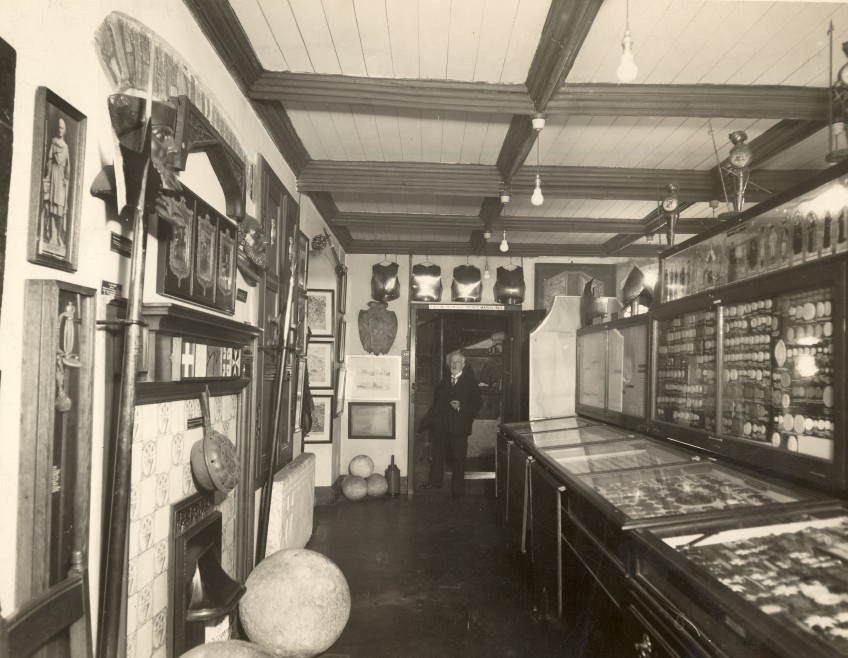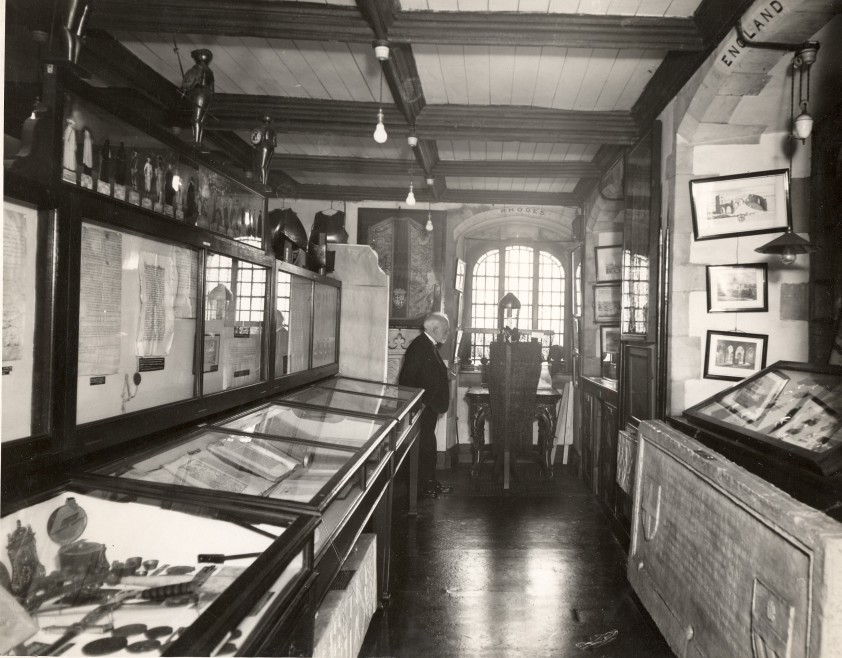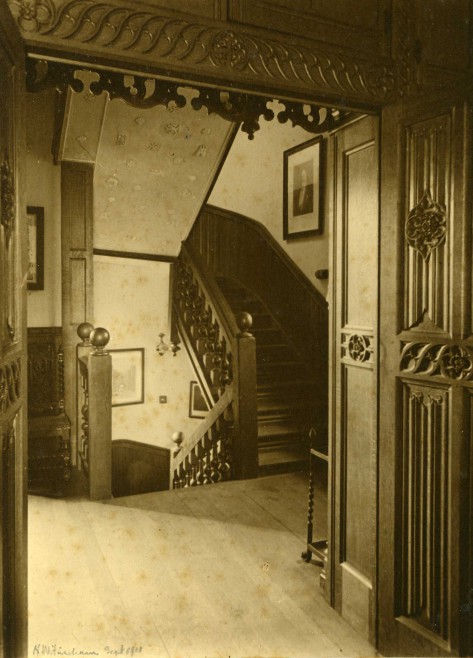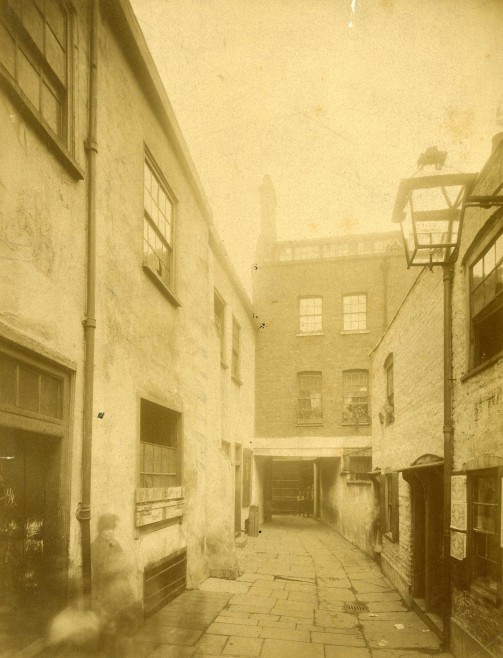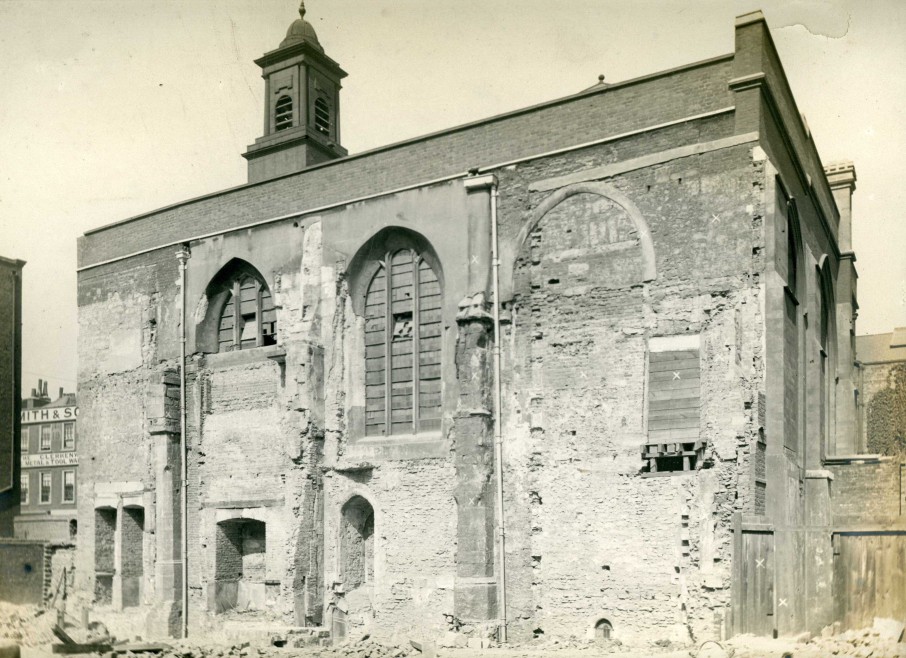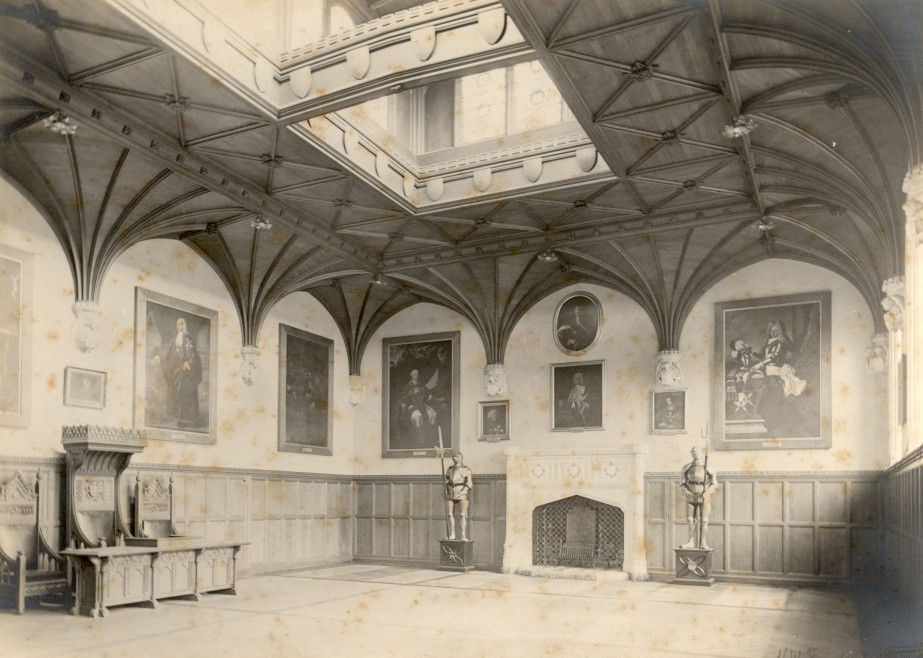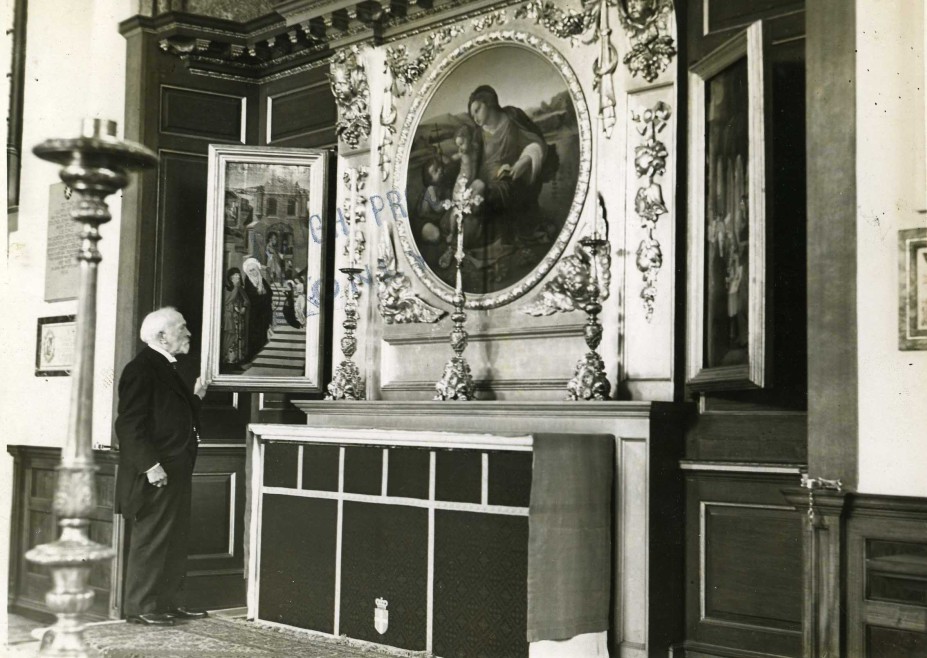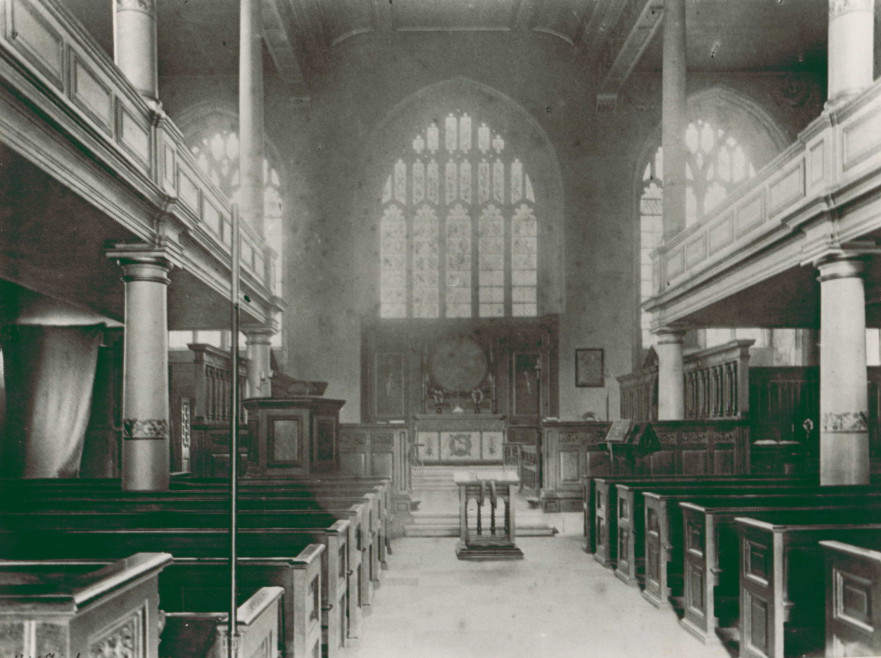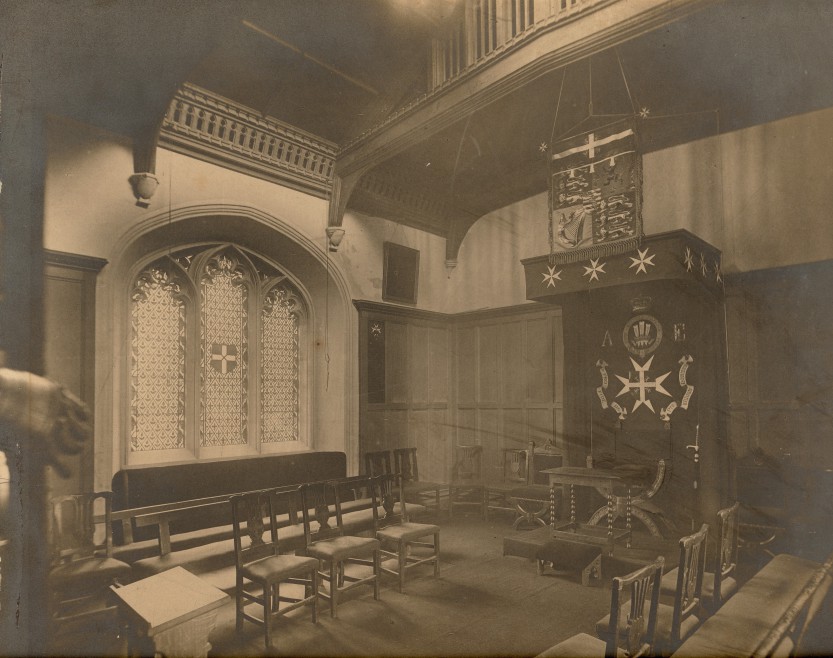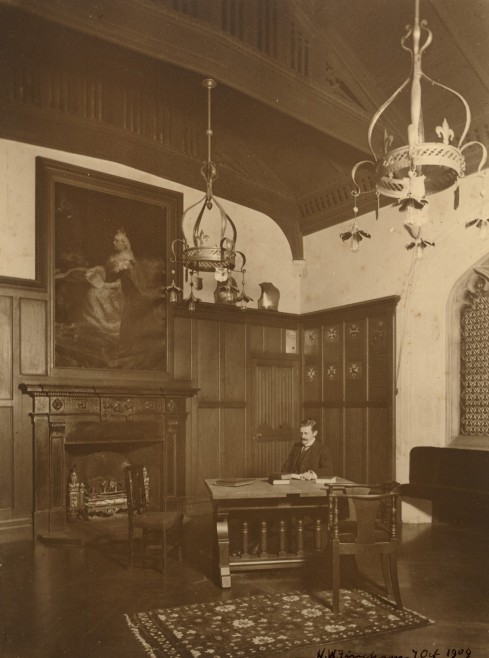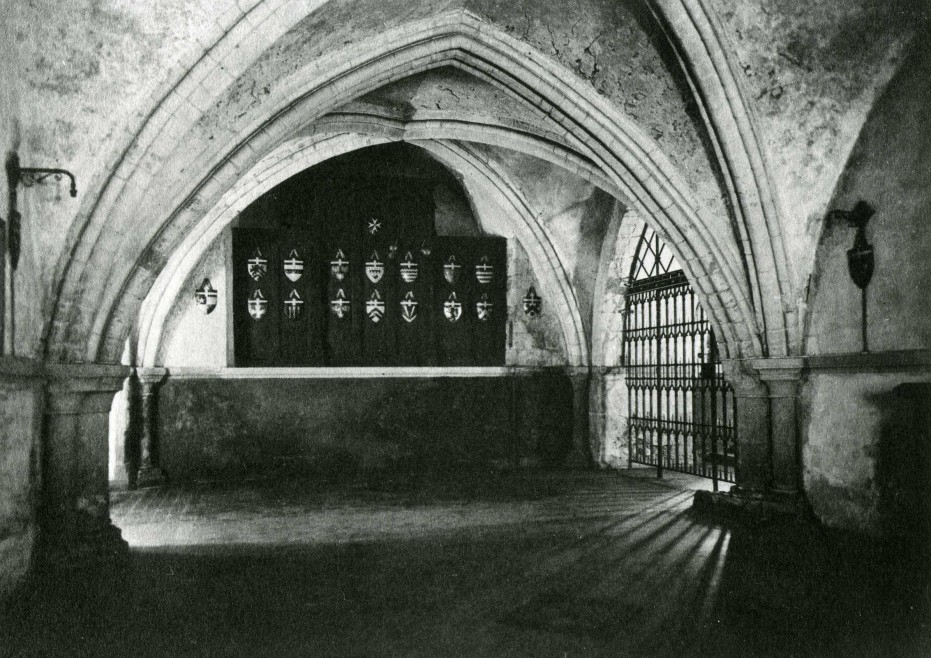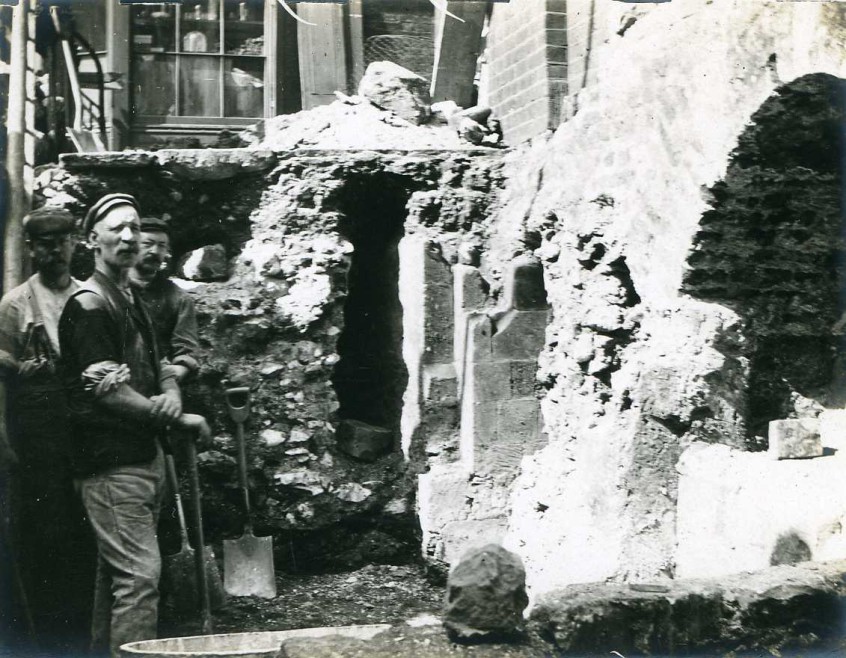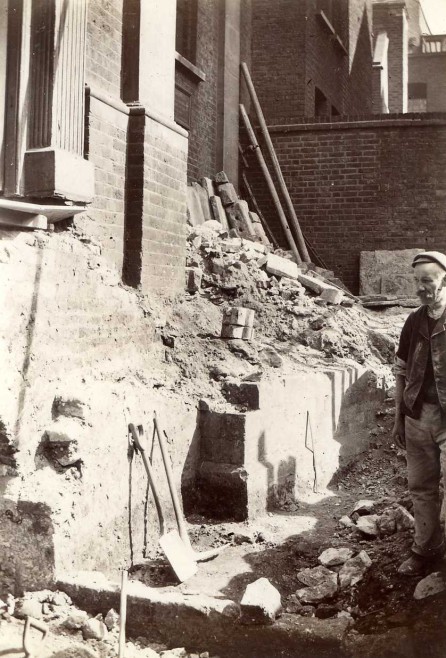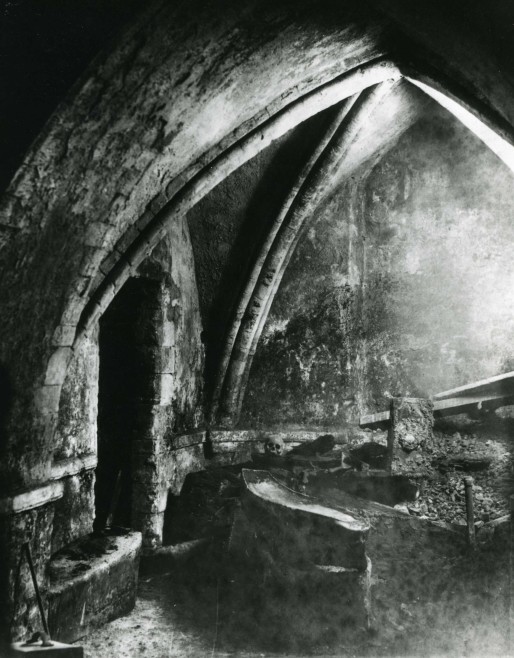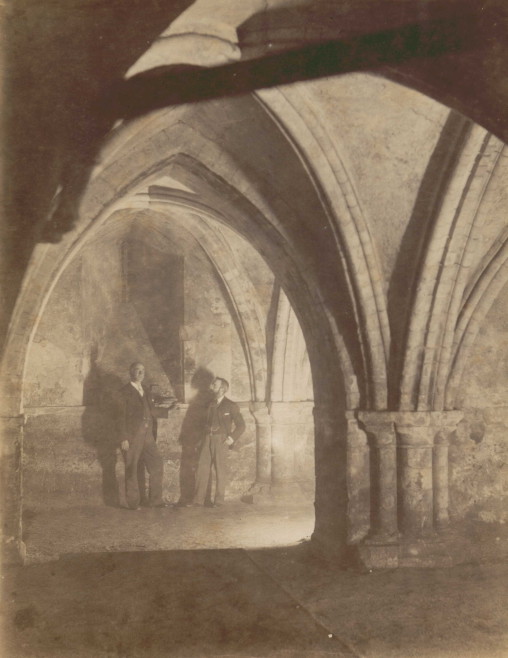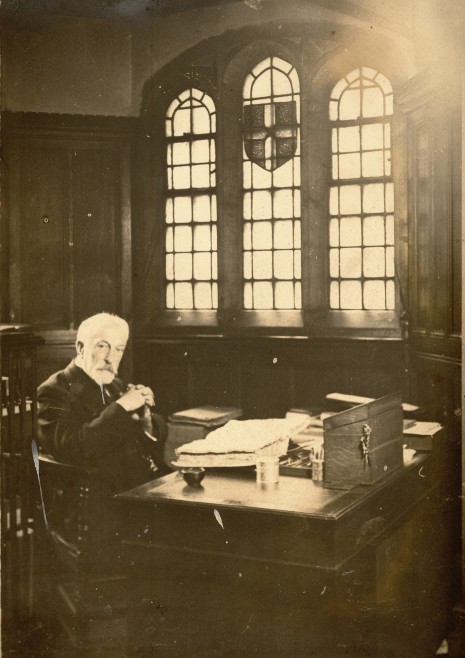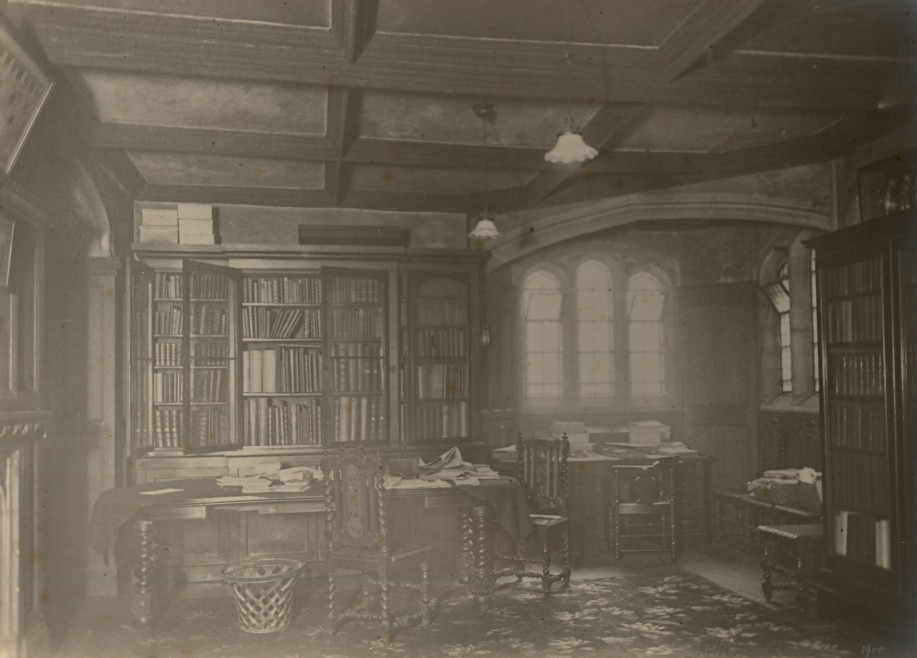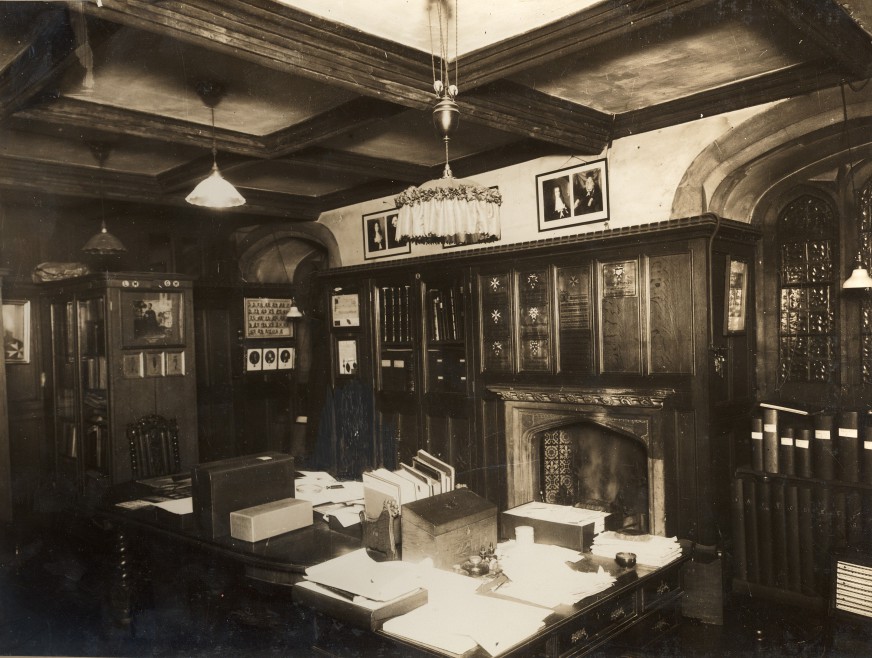In the late 19th century, the Priory Church of the Order of St John was not the property of the newly created Venerable Order. It was, instead, the Parish Church for the area immediately surrounding St John’s Square, and Henry Walter Fincham FSA (1860-1952), was one of the Church’s two wardens. Alongside his Church role to which he was appointed in 1890, Henry Fincham was a keen antiquarian and photographer, and from 1893 until 1900, he was heavily involved in the restoration of the Crypt of St John’s Church.
During this period of restoration, he oversaw the removal of 325 bodies from the Crypt in 1894, when they were moved to a cemetery on the outskirts of London. Accounts also record that Fincham visited the site daily to ensure that archaeological remains of the original 12th century Church were preserved. It was also at this time that the excavations confirmed that the first Church had a round nave, now marked in cobbles on St John’s Square.
Following the dissolution of the Order of St John in 1540, the Priory Church here in Clerkenwell passed into Crown hands, and was then leased privately. It was only in the 1720s that the Church site was redeveloped to become a parish church, and it remained as such until 1931, when it was given to the Order to function as their own church – as it remains today.
Although the Church was not officially the property of the Order in the 19th century, it was nevertheless used on numerous occasions for commemorative Order events, and it was through this association that Henry Fincham developed such a close connection with the order and its historic home in Clerkenwell. His scholarship was recognised first through his appointment as Assistant Librarian of the Order and later in around 1925, as the first curator of the burgeoning Museum collection. Fincham was pivotal in establishing the foundations of the modern Museum here in St John’s Gate, and in 1923, the first Museum room was opened on the ground floor of the West Tower.
When St John’s Gate was purchased by Sir Edmund Lechmere in 1873, with the intention of turning it into the headquarters of the Venerable Order, the buildings were in a poor state of repair and so a sustained period of restoration was begun. Throughout this period, Henry Fincham recorded these architectural developments, and the topography of the surrounding area, in photographs and glass lantern slides. These photographs and slides are now in the Museum collection, and give a fascinating insight into the transformation of the former Priory buildings – the Church, Crypt, and St John’s Gate – as well as the adjoining streets and alleys, many of which no longer exist.
Interestingly, from the 1920s, Henry Fincham was joined in his photographic work by his son, William Henry Angel Fincham, who produced the first photographic record of the Museum’s collection, taking more than 600 photographs of objects. The photographs and the associated research carried out by his father form a bound volume that continues to be a point of reference for collection research.



